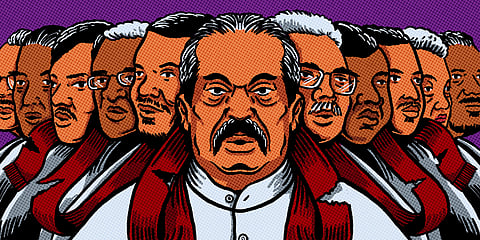The Rajapaksas’ endless quest for power
MOST SRI LANKANS trust in the stars. Astrological pronouncements guide private lives and public affairs, from the naming of a new-born to the timing of an election.
Sumanadasa Abeygunawardena was no ordinary practitioner of what the Buddha had warningly termed “debased arts”. Known as the “royal astrologer”, he was a trusted advisor to Sri Lanka’s sixth executive president, Mahinda Rajapaksa, and thus privy to the inner workings of the country’s first family. So when, in June 2009, he publicly predicted that Sri Lanka was destined for half a century of Rajapaksa rule, it was regarded as a statement of intent if not fact.
Ground reality did seem to be aligning with the stars. In May 2009, the Sri Lankan military won the country’s 26-year-long Eelam War. The Liberation Tigers of Tamil Eelam (LTTE), fighting for a separate Tamil homeland in the country’s Northern and Eastern Provinces, were wiped out, and the group’s leader, Velupillai Prabhakaran, was killed. At the start of 2010, Mahinda cruised to victory in a surprise presidential election and returned to office for a second term. That April, his political alliance, the United People’s Freedom Front, secured a near two-thirds majority in parliament. Among the winners were his oldest son, Namal, his brothers Chamal and Basil, and his niece Nirupama. In September, Mahinda pushed through the 18th Amendment to the Constitution of Sri Lanka, which removed presidential term limits and let him contest the presidency as many times as he desired.

